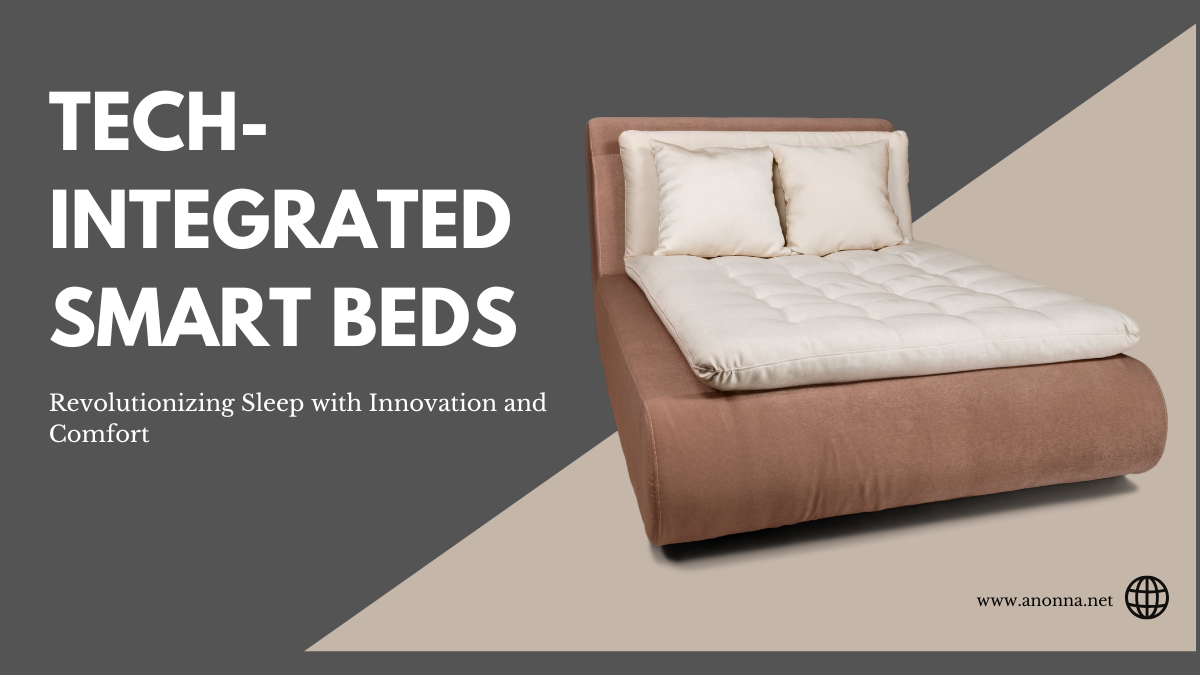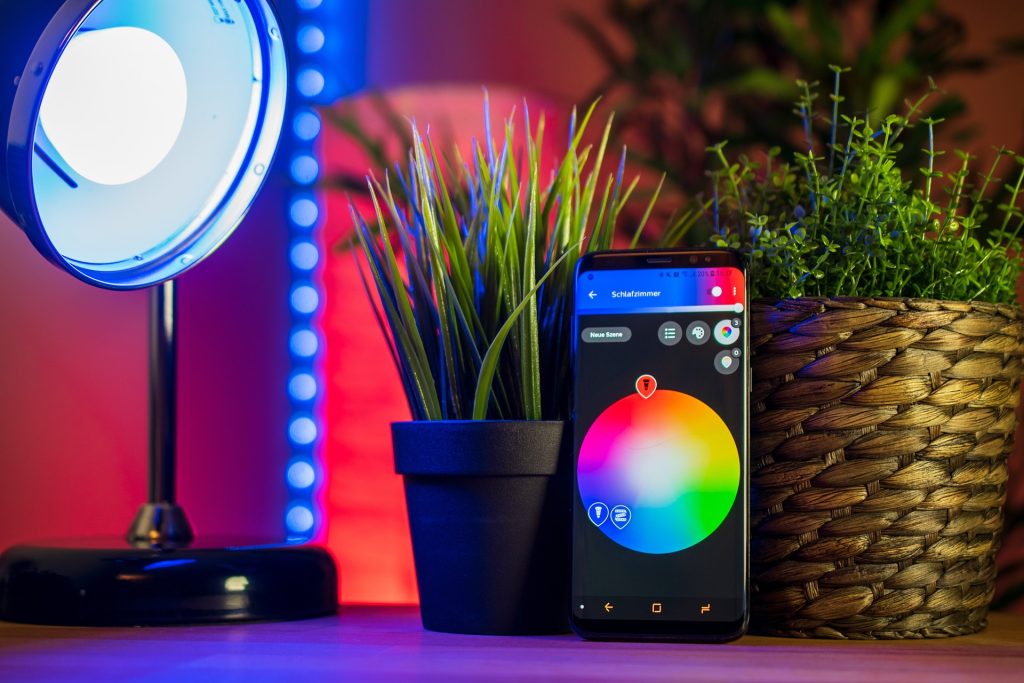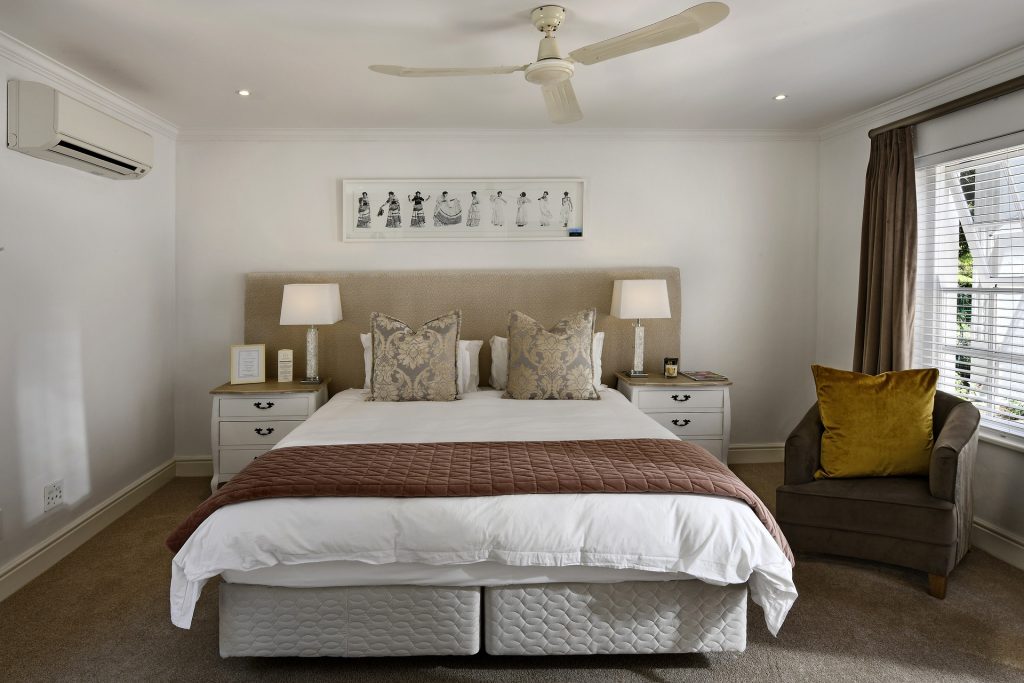
Tech-Integrated Smart Beds: Revolutionizing Sleep with Innovation and Comfort
As technology continues to transform everyday life, one area where it’s making a significant impact is in sleep technology. Tech-integrated smart beds are designed to enhance the quality of sleep by combining comfort with innovative features. These beds are no longer just about being a place to rest—they’re becoming an essential part of a healthier lifestyle, offering solutions to sleep problems, improving overall well-being, and contributing to smarter home ecosystems.
What Are Tech-Integrated Smart Beds?
Tech-integrated smart beds are advanced sleeping systems that incorporate various technologies to improve sleep quality and health. These beds typically include features like adjustable firmness, temperature control, and integrated sensors that track sleep patterns. They can sync with other smart devices in your home, such as thermostats, lights, or voice assistants, for a fully automated sleep experience. Many models come with built-in apps that provide real-time data, allowing users to monitor their sleep performance and make adjustments for better rest.
Why Smart Beds Are Gaining Popularity
The growing awareness of the importance of sleep has led to a surge in demand for tech-integrated smart beds. These beds offer personalized comfort and health monitoring, which traditional mattresses cannot provide. They cater to a wide variety of needs, from people suffering from sleep disorders like apnea to those who simply want to optimize their sleep quality. As more people realize the connection between sleep and overall health, the market for smart beds continues to expand, driven by advancements in technology and a growing focus on wellness.
The Future of Sleep Technology
The future of sleep technology looks promising, with continued innovation in smart bed designs and features. Researchers and engineers are developing more sophisticated sensors that can monitor everything from heart rate to body movements, with the aim of providing even more personalized sleep insights. As artificial intelligence (AI) and machine learning continue to evolve, we can expect smart beds to become more intuitive, adjusting automatically to the user’s unique sleep needs. Additionally, as connectivity between devices improves, smart beds will likely become even more integrated into the broader smart home ecosystem, making sleep an even more seamless part of daily life.
Key Features of Tech-Integrated Smart Beds
Tech-integrated smart beds come with a range of features designed to enhance comfort, improve sleep quality, and promote overall health. These features combine advanced technology with traditional bedding to create a highly personalized sleep experience. Below are some of the most notable features found in modern smart beds.

Adjustable Comfort and Sleep Positioning
One of the standout features of tech-integrated smart beds is the ability to adjust comfort levels and sleep positioning. Many models offer customizable firmness settings, allowing users to modify the feel of the bed according to their preferences. In addition to firmness control, some beds come with adjustable bases that can elevate the head or foot of the bed, making it easier to find a comfortable sleeping position. This feature is especially beneficial for people with medical conditions such as acid reflux, sleep apnea, or back pain, as it helps to alleviate pressure and improve circulation.
Built-in Sleep Monitoring and Health Tracking
Many smart beds come equipped with sensors that track various aspects of your sleep. These sensors monitor movements, heart rate, respiratory rate, and even sleep cycles, providing insights into the quality of your rest. The collected data is typically synced with a companion app, where users can view detailed reports on their sleep patterns and health metrics. This information can help individuals identify sleep issues and take proactive steps to improve their sleep hygiene. In some cases, the smart bed may even offer personalized recommendations based on the data it collects.
Temperature Control for Optimal Sleep Environment
Maintaining an ideal sleep temperature is crucial for quality rest, and many tech-integrated smart beds come with advanced temperature control features. These beds often include heating and cooling systems that can adjust the bed’s temperature based on the user’s preferences or even the time of night. For instance, the bed might cool down when the user falls asleep and gradually warm up in the early morning. This feature helps regulate body temperature, which plays a key role in improving sleep quality and preventing disruptions caused by overheating or feeling too cold.
Integration with Smart Home Devices
Tech-integrated smart beds are often designed to work seamlessly with other smart home devices, creating a fully connected sleep environment. Many beds can integrate with voice assistants like Amazon Alexa, Google Assistant, or Apple HomeKit, allowing users to control their bed with voice commands. For example, you might ask your smart assistant to adjust the bed’s position, change the temperature, or even dim the lights as you prepare to sleep. Additionally, these beds can sync with other smart home devices, such as smart thermostats, lights, and white noise machines, to create a harmonious sleep environment. This level of integration adds convenience and helps optimize the entire sleep experience.
Let me know if you’d like further refinements!
Benefits of Tech-Integrated Smart Beds
Tech-integrated smart beds offer a wide range of benefits that go beyond just providing a comfortable place to sleep. These beds are designed to improve overall well-being, enhance sleep quality, and integrate seamlessly into the daily routines of modern life. Below are some of the key advantages of using a tech-integrated smart bed.
Enhanced Sleep Quality
One of the most significant benefits of tech-integrated smart beds is the improvement in sleep quality. With features such as adjustable comfort, sleep monitoring, and temperature control, smart beds allow users to create a personalized sleep environment that supports deeper, more restful sleep. The sensors in these beds track sleep cycles and movements, providing valuable insights into how well users are sleeping and where improvements can be made. With the ability to adjust firmness, elevation, and temperature, users can optimize their sleep experience for better rest and more restorative sleep.
Health and Wellness Benefits
Tech-integrated smart beds can offer numerous health and wellness benefits. The built-in sleep monitoring systems help users identify potential sleep disorders such as sleep apnea or restless leg syndrome. By tracking heart rate, breathing patterns, and body movements, these beds provide valuable data that can be used to improve health. For instance, people with conditions like back pain or joint problems can adjust the bed to alleviate pressure and improve comfort. Additionally, by promoting better sleep hygiene and improving sleep quality, smart beds can help boost mood, reduce stress, and enhance overall well-being.
Convenience and Personalization
Smart beds offer a level of convenience and personalization that traditional beds cannot. With customizable settings for comfort, position, and temperature, users can tailor their sleeping experience to their exact needs. Many smart beds come with app integration, allowing users to control their bed remotely and even monitor their sleep data. These beds also adapt to the user’s sleep patterns over time, making automatic adjustments to optimize comfort as the night progresses. Whether adjusting the firmness of the mattress or syncing with other smart devices, the level of convenience and personalization provided by tech-integrated smart beds is unmatched.
Energy Efficiency and Cost-Effectiveness
Although tech-integrated smart beds may have a higher upfront cost compared to traditional mattresses, they can be more energy-efficient and cost-effective in the long run. Many smart beds feature energy-saving technologies, such as automatic temperature adjustments, which can reduce energy consumption while ensuring that the user sleeps at an optimal temperature. Additionally, some models are designed with durable materials that can extend the lifespan of the bed, reducing the need for frequent replacements. With advanced features that promote better sleep and overall health, users may also find that they experience fewer health-related issues over time, which can reduce healthcare costs.
How Tech-Integrated Smart Beds Compare to Traditional Beds
While traditional beds have been the standard for centuries, tech-integrated smart beds offer a new level of comfort, customization, and innovation. As smart technology continues to advance, these beds provide features that go beyond the basic functionality of a mattress. Here’s how tech-integrated smart beds compare to their traditional counterparts.
Comfort and Customization
One of the most notable differences between tech-integrated smart beds and traditional beds is the level of comfort and customization available. Traditional mattresses are limited to the type of materials used—such as memory foam, innerspring, or hybrid—and generally offer a fixed level of comfort. In contrast, smart beds allow users to adjust the firmness, elevation, and even the sleep position to suit their preferences. Many smart beds come with dual-zone technology, meaning couples can customize each side of the bed to meet their individual needs for firmness and comfort. This level of personalization is not possible with standard mattresses, making smart beds a superior choice for those seeking tailored sleep experiences.
Smart Features vs. Basic Features
Traditional beds are relatively simple in terms of features. They generally provide a flat surface for sleeping, with no additional technological integration. In contrast, tech-integrated smart beds come equipped with various advanced features such as sleep tracking, built-in sensors, temperature control, and integration with other smart home devices. Some models even offer automatic adjustments based on sleep patterns, such as raising the bed to improve breathing or lowering the temperature for better rest. These smart features can help optimize sleep quality, making them ideal for those who struggle with sleep disorders or simply want to improve their overall sleep experience. Traditional beds, on the other hand, lack these technological innovations, limiting their ability to enhance sleep quality in the same way.
Durability and Maintenance
Durability and maintenance are important considerations when comparing smart beds to traditional beds. Traditional mattresses, if properly cared for, can last anywhere from 7 to 10 years, depending on the materials and quality of construction. However, they typically don’t require much maintenance beyond regular flipping or rotating to ensure even wear. Smart beds, while durable, may require more attention due to the integrated technology. For example, the motorized components, sensors, and heating/cooling systems may need periodic maintenance or servicing. Additionally, smart beds may be more susceptible to issues related to technology, such as software malfunctions or connectivity problems. However, many manufacturers offer warranties and support for these issues, ensuring that users can receive assistance if anything goes wrong. Overall, while smart beds may require more upkeep than traditional mattresses, their durability and longevity are often enhanced by advanced materials and features.
How Tech-Integrated Smart Beds Compare to Traditional Beds
While traditional beds have been the standard for centuries, tech-integrated smart beds offer a new level of comfort, customization, and innovation. As smart technology continues to advance, these beds provide features that go beyond the basic functionality of a mattress. Here’s how tech-integrated smart beds compare to their traditional counterparts.
Comfort and Customization
One of the most notable differences between tech-integrated smart beds and traditional beds is the level of comfort and customization available. Traditional mattresses are limited to the type of materials used—such as memory foam, innerspring, or hybrid—and generally offer a fixed level of comfort. In contrast, smart beds allow users to adjust the firmness, elevation, and even the sleep position to suit their preferences. Many smart beds come with dual-zone technology, meaning couples can customize each side of the bed to meet their individual needs for firmness and comfort. This level of personalization is not possible with standard mattresses, making smart beds a superior choice for those seeking tailored sleep experiences.
Smart Features vs. Basic Features
Traditional beds are relatively simple in terms of features. They generally provide a flat surface for sleeping, with no additional technological integration. In contrast, tech-integrated smart beds come equipped with various advanced features such as sleep tracking, built-in sensors, temperature control, and integration with other smart home devices. Some models even offer automatic adjustments based on sleep patterns, such as raising the bed to improve breathing or lowering the temperature for better rest. These smart features can help optimize sleep quality, making them ideal for those who struggle with sleep disorders or simply want to improve their overall sleep experience. Traditional beds, on the other hand, lack these technological innovations, limiting their ability to enhance sleep quality in the same way.
Durability and Maintenance
Durability and maintenance are important considerations when comparing smart beds to traditional beds. Traditional mattresses, if properly cared for, can last anywhere from 7 to 10 years, depending on the materials and quality of construction. However, they typically don’t require much maintenance beyond regular flipping or rotating to ensure even wear. Smart beds, while durable, may require more attention due to the integrated technology. For example, the motorized components, sensors, and heating/cooling systems may need periodic maintenance or servicing. Additionally, smart beds may be more susceptible to issues related to technology, such as software malfunctions or connectivity problems. However, many manufacturers offer warranties and support for these issues, ensuring that users can receive assistance if anything goes wrong. Overall, while smart beds may require more upkeep than traditional mattresses, their durability and longevity are often enhanced by advanced materials and features.
Choosing the Right Tech-Integrated Smart Bed
When selecting a tech-integrated smart bed, there are several factors to consider to ensure you choose the right one for your needs. With so many models and features available, making an informed decision is crucial. Here are some key considerations to help guide your purchase.
Factors to Consider When Buying a Smart Bed
Before purchasing a smart bed, it’s important to evaluate your specific needs and preferences. Consider the following factors:
- Comfort and Adjustability: Does the bed offer adjustable firmness and positioning? Can it be personalized for both partners if shared?
- Sleep Monitoring Features: Are you interested in sleep tracking? Check if the bed offers detailed insights into your sleep patterns and health metrics.
- Temperature Control: If maintaining an optimal sleep temperature is important to you, look for a bed that includes heating and cooling capabilities.
- Compatibility with Other Devices: Ensure that the bed integrates well with your existing smart home setup, such as voice assistants or smart thermostats.
- Warranty and Support: Given the technology involved, check the warranty terms and customer service reputation for resolving any issues.
Top Brands and Models of Tech-Integrated Smart Beds
Several companies lead the market for tech-integrated smart beds, offering a variety of models with different features. Some of the top brands include:
- Sleep Number: Known for its customizable firmness and advanced sleep tracking technology, Sleep Number offers models with features like dual-zone adjustments and app control.
- Tempur-Pedic: Known for memory foam mattresses, Tempur-Pedic also offers smart models that include sleep tracking, position adjustments, and integrated temperature control.
- Eight Sleep: A newer brand that focuses heavily on temperature regulation, sleep tracking, and integration with other smart devices. Its beds come with advanced features like sleep coaching and personalized recommendations.
- ReST: Offers beds with dynamic firmness that adjusts throughout the night based on your sleep data, along with built-in sleep monitoring features.
Price Range and Value for Money
Tech-integrated smart beds come with a wide range of prices depending on the brand, features, and materials used. Prices typically start around $1,000 for more basic models, with high-end beds reaching upwards of $5,000 or more. While the upfront cost can be significant, many users find the investment worthwhile due to the long-term health benefits and improved sleep quality. It’s important to weigh the value of the features you’re getting against the cost, especially considering potential savings on healthcare costs related to sleep disorders or chronic pain. Be sure to compare different models to find the right balance of features, comfort, and price.
The Impact of Tech-Integrated Smart Beds on the Sleep Industry
The rise of tech-integrated smart beds is not just a trend but a significant shift in the sleep industry. As technology continues to advance, these beds are revolutionizing how we approach sleep, wellness, and sleep-related health issues. The integration of cutting-edge technology into the design of sleep systems is reshaping the way we think about rest, offering solutions to common sleep problems and enhancing overall sleep quality.
Technological Advancements in Sleep Science
In recent years, there have been remarkable advancements in sleep science, driven largely by technology. Smart beds are at the forefront of this revolution, utilizing sensors, data analytics, and machine learning to provide deep insights into sleep patterns and sleep quality. These advancements have enabled a more personalized approach to sleep, where the bed can monitor variables like heart rate, respiration, and body movements, and adjust automatically to optimize comfort. Furthermore, sleep scientists are using the data collected by these beds to study sleep cycles more comprehensively, opening new avenues for understanding how sleep affects overall health. With these technological innovations, smart beds are now an essential tool in advancing sleep science, pushing the boundaries of how we can improve the quality of our sleep.
The Role of Smart Beds in Sleep Disorders
Smart beds play a crucial role in managing and alleviating sleep disorders, such as insomnia, sleep apnea, and restless leg syndrome. By offering real-time data on sleep patterns and providing insights into factors that might be disrupting rest, these beds can help users and healthcare professionals identify underlying issues. Some smart beds are equipped with features like adjustable positions, which can alleviate symptoms of conditions like acid reflux or sleep apnea, by elevating the head or optimizing sleeping posture. Additionally, the sleep tracking capabilities of these beds allow for more accurate monitoring, which can be invaluable for diagnosing sleep disorders and customizing treatment plans. In this way, tech-integrated smart beds are becoming a valuable tool in the treatment of sleep disorders, offering users a more proactive approach to managing their sleep health.

Predictions for the Future of Sleep Technology
The future of sleep technology looks promising, with continued innovation on the horizon. As artificial intelligence (AI) and machine learning evolve, we can expect smarter, more intuitive tech-integrated smart beds that will learn from users’ sleep patterns and automatically adjust to their needs. Future beds could feature even more advanced sensors that track additional health metrics, such as brain activity, and integrate seamlessly with other health-tracking devices like wearable fitness trackers. Additionally, as sleep research continues to grow, smart beds may become even more focused on personalized sleep solutions, offering tailored advice and automatic adjustments based on individual sleep needs. As technology continues to evolve, it is clear that the future of sleep technology will bring even more sophisticated solutions to enhance sleep quality, address health issues, and improve overall wellness.
Conclusion
As the sleep industry continues to evolve, tech-integrated smart beds are making a significant impact, offering personalized comfort and innovative features that cater to the modern sleeper’s needs. These advanced beds not only enhance sleep quality but also contribute to better health and overall well-being. With advancements in technology and a growing understanding of sleep science, smart beds are becoming an essential tool for those looking to improve their rest and manage sleep disorders.
Are Tech-Integrated Smart Beds Worth the Investment?
The decision to invest in a tech-integrated smart bed depends largely on your individual needs, preferences, and budget. For those who value personalized comfort, the ability to track sleep data, and access to features like temperature control and sleep monitoring, the investment can be well worth it. While the initial cost may be higher than that of traditional mattresses, the long-term benefits—such as better sleep quality, improved health, and the potential to reduce healthcare costs—make these beds a compelling choice for many. If you struggle with sleep disorders or simply want to optimize your sleep experience, a smart bed can provide valuable tools and insights that improve both your sleep and overall quality of life.
Final Thoughts on Revolutionizing Sleep with Technology
Tech-integrated smart beds represent a new era in sleep technology, offering a combination of comfort, health monitoring, and innovation that traditional beds simply cannot match. As sleep science continues to evolve and technology becomes even more integrated into daily life, the potential for smart beds to revolutionize how we sleep is vast. Whether for improving sleep quality, managing health issues, or simply enjoying the convenience of a personalized sleep experience, these beds are helping to shape the future of rest. In an age where wellness and self-care are becoming increasingly important, tech-integrated smart beds are at the forefront of revolutionizing the way we approach sleep, offering smarter, healthier, and more comfortable nights of rest. You can read more article from here.



Add comment